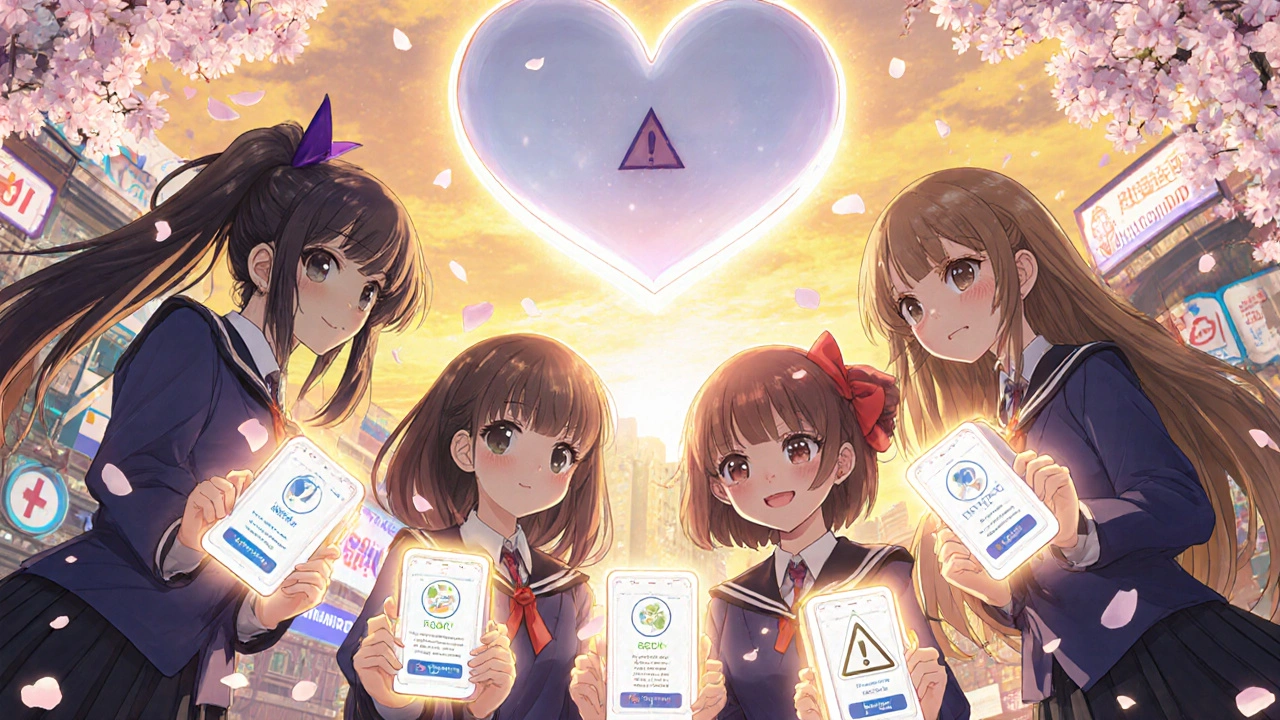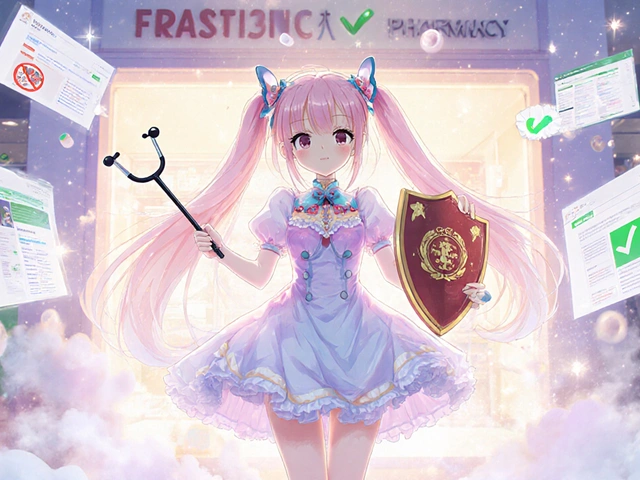More than half of adults in the U.S. take at least one prescription drug. If you’re on two or more, you’re at risk for a drug interaction that could make you sick-or worse. A drug interaction checker isn’t just a fancy app. It’s a safety net. Used right, it can catch a dangerous mix before it hits your bloodstream. Used wrong, it gives you false reassurance. This guide shows you exactly how to use one-step by step-so you don’t become a statistic.
What Exactly Is a Drug Interaction Checker?
A drug interaction checker is a digital tool that scans your medications, supplements, and sometimes even foods to spot dangerous combinations. It doesn’t guess. It uses pharmacology databases built over decades to predict what happens when two or more substances meet in your body. Some interactions reduce effectiveness. Others cause bleeding, heart rhythm problems, liver damage, or even death. There are two main types: professional-grade tools used by doctors and pharmacists, and consumer apps designed for everyday users. Professional systems like Micromedex and Lexi-Interact are built into hospital EHRs and flag interactions with clinical context. Consumer apps like Medisafe are simpler, meant for people managing their own meds at home. The key difference? Accuracy and depth. Professional tools know the difference between oral and topical forms of a drug. Consumer apps often don’t. One study found that top clinical checkers caught 85% of serious interactions. The best consumer apps? Around 70%. That gap matters.Step 1: Gather Your Full Medication List
Before you open any app or website, get everything written down. Not just prescriptions. Include:- All prescription drugs (including antibiotics and painkillers)
- Over-the-counter meds like ibuprofen, antacids, or sleep aids
- Vitamins, minerals, and herbal supplements (St. John’s Wort, garlic pills, ginkgo)
- Any recreational substances you use regularly (alcohol, cannabis)
Step 2: Choose the Right Tool
Not all checkers are equal. Here’s what to pick based on your situation:- If you’re a patient managing your own meds: Use Medisafe (iOS/Android). It’s simple, has a built-in “Med Cabinet” to store your list, and sends alerts if you add something risky.
- If you’re a caregiver or pharmacist: Use Lexi-Interact or Micromedex. These are the gold standard in hospitals. They show severity levels, mechanisms, and alternative options.
- If you’re on a specific drug like a COVID-19 treatment: Use the University of Liverpool’s DDI Checker. It’s free, specialized, and color-coded for quick reading.
- If you’re a developer or tech-savvy user: DrugBank’s API lets you build custom checks, but you need technical skills.
Step 3: Enter Your Drugs Accurately
This is where most people mess up. Don’t just type “aspirin.” Type “aspirin 81 mg tablet.” Or “ibuprofen 400 mg.” Most tools use dropdown menus. Start typing. If “ibuprofen” doesn’t show up, try “Advil” or “Motrin.” If it still doesn’t appear, check the spelling. Some systems don’t recognize brand names unless you type them exactly. For professional tools, you might need to select the route of administration. Is it oral? Topical? IV? That changes the interaction risk. A topical steroid might be safe with warfarin. An oral one? Not so much. Never skip this step. A 2023 study found that 32% of user errors in DDI checkers came from incorrect drug selection. If you pick “ibuprofen” but the system thinks you meant “ibuprofen gel,” you’ll get a false “no interaction” result.
Step 4: Review the Results-Don’t Just Look for Red
Once you hit “check,” you’ll see results. Don’t panic at the first red alert. Don’t ignore it either. Most tools use color codes:- Red: Contraindicated. Don’t take together. High risk of serious harm.
- Orange: Significant interaction. May need dose change or monitoring.
- Yellow: Minor interaction. Watch for symptoms, but usually safe.
- Green: No known interaction.
- “Warfarin + ibuprofen: Increased bleeding risk due to platelet inhibition.”
- “Simvastatin + grapefruit juice: 15x increase in blood levels → muscle damage risk.”
Step 5: Act on the Information
A checker doesn’t tell you what to do. You do. If you see a red alert: Call your doctor or pharmacist immediately. Don’t wait. Don’t Google it. Don’t assume it’s “just a warning.” If you see an orange alert: Ask your provider: “Should I change the dose? Do I need blood tests? Is there a safer alternative?” If you see a yellow alert: Note it. Monitor yourself. If you feel dizzy, nauseous, or bruise easily, stop and check again. Never override a warning just because “I’ve taken this combo for years.” Your body changes. Your liver slows down. Your kidneys weaken. What was safe last year might be dangerous now.Why People Trust These Tools Too Much
A 2022 study showed clinicians ignored 49% of DDI alerts in hospitals. Why? Alert fatigue. Too many false alarms. Too many pop-ups. People tune out. Consumer apps aren’t perfect either. Medisafe users reported 100,000+ interaction alerts since launch. But many were low-risk. One Reddit user said they got 30+ alerts for harmless combos. It’s exhausting. The truth: DDI checkers are tools, not replacements for clinical judgment. They catch 60-85% of serious interactions. That’s good. But 15-40% still slip through. That’s why experts say: use at least two tools. Cross-check. If Medisafe says “no interaction” but Lexi-Interact says “orange,” dig deeper.
What to Do When the Tool Fails You
No checker is flawless. Here’s how to protect yourself when the tech lets you down:- Always tell your pharmacist every supplement you take-even if you think it’s “nothing.”
- Ask: “Is there a safer alternative?” when a new drug is prescribed.
- Keep a printed list of your meds and bring it to every appointment.
- Use the same pharmacy for all prescriptions. They can track interactions across all your drugs.
- If you feel weird after starting a new med-dizziness, nausea, unusual bruising, chest pain-stop it and call your provider. Don’t wait for the app to warn you.
Real-Life Example: What Went Right
A 68-year-old woman in New Zealand was prescribed warfarin for atrial fibrillation. She also took ibuprofen for arthritis pain. She didn’t think it was a big deal. She used Medisafe. The app flagged a red alert: “High risk of bleeding.” She called her pharmacist. They switched her to acetaminophen. No more painkiller risks. No hospital stay. No blood transfusion. Just a simple change-caught by an app she checked once a week.What’s Next for Drug Interaction Checkers?
The future is personal. New systems are starting to use your genetics. Mayo Clinic is testing tools that factor in how your body metabolizes drugs based on DNA. That means a checker could tell you: “You’re a slow metabolizer of statins. Avoid grapefruit. Dose should be 50% lower.” AI is cutting false alerts. Lexicomp’s new machine learning model reduced wrong warnings by 22% in trials. That means fewer distractions. More trust. But the core hasn’t changed. The best checker is useless if you don’t use it. Or if you ignore the warnings. Or if you assume it knows everything.Final Checklist: Use It Right Every Time
- ✅ Have a complete, written list of all meds and supplements
- ✅ Use a trusted checker (Medisafe, Lexi-Interact, or University of Liverpool)
- ✅ Enter exact drug names and dosages
- ✅ Click every alert to read the explanation
- ✅ Never ignore a red alert-call your provider
- ✅ Cross-check with a second tool if unsure
- ✅ Update your list every time you start or stop a drug
- ✅ Talk to your pharmacist. They’re the real safety net.
Drug interaction checkers don’t replace your brain. They amplify it. Use them like a seatbelt-not because you think you’ll crash, but because you know you might.
Can drug interaction checkers be trusted completely?
No. Even the best systems miss 15-40% of dangerous interactions. They’re tools, not crystal balls. Always confirm with a pharmacist or doctor, especially for red alerts. Never rely on an app alone.
Do I need to check interactions every time I take a new drug?
Yes. Even if you’ve taken the same combo before, your body changes. Age, liver function, kidney health, and other meds can turn a safe mix into a dangerous one. Always check when you start, stop, or change a dose.
Are over-the-counter supplements safe to ignore in a checker?
Never. Supplements like St. John’s Wort, garlic, ginkgo, and vitamin E can cause serious interactions. A 2023 study found over 40% of dangerous drug interactions involved supplements. Always include them in your list.
Why do I get so many alerts on my app?
Many consumer apps flag minor or theoretical risks to be safe. This causes alert fatigue. If you’re overwhelmed, switch to a professional tool like Lexi-Interact or talk to your pharmacist. They can help you filter out noise.
Can I use a drug interaction checker for my pet’s medications?
No. These tools are designed for human pharmacology. Animal metabolism is completely different. Always consult a veterinarian for pet medication safety.
What if my doctor says the interaction isn’t a problem?
Ask them why. Get it in writing. Some interactions are managed with monitoring-like regular blood tests. But never assume. If you’re unsure, get a second opinion from a pharmacist. They specialize in drug safety.
Are free drug interaction checkers reliable?
Some are, some aren’t. Stick to trusted sources: Medisafe, University of Liverpool, Epocrates. Avoid random websites, especially those asking for personal info or pushing products. Free doesn’t mean safe.
If you’re on multiple medications, this isn’t optional. It’s your daily safety routine-like brushing your teeth. Do it every time. No excuses.






Comments
Peter Aultman
November 14, 2025 AT 08:59 AMBeen using Medisafe for years. Best thing since sliced bread for my 7 meds. Just don't ignore the yellow ones. I did once. Ended up in the ER. Don't be me.
Ashley Durance
November 14, 2025 AT 23:39 PMLet’s be real-most people don’t even know what ‘pharmacokinetics’ means. They type ‘ibuprofen’ into some app, get a green light, and assume they’re invincible. The 15-40% miss rate isn’t a flaw-it’s a feature of human arrogance. This guide is decent, but it’s still just a Band-Aid on a hemorrhage.
gent wood
November 15, 2025 AT 04:59 AMI appreciate the thoroughness of this guide, but I must point out that the emphasis on consumer apps overlooks the critical role of the community pharmacist. In the UK, we have pharmacists who review every script-manually. No app can replicate that human vigilance. Trust your pharmacist, not your phone.
Kevin Wagner
November 15, 2025 AT 09:05 AMY’ALL. This is the most important thing you’ll read this year. Seriously. I used to think supplements were harmless. Then my grandma almost died because she took St. John’s Wort with her blood thinner. Now I check EVERYTHING. Even my turmeric. I’m not joking. You’re one click away from a hospital bed. Do it. Now.
Nathan Hsu
November 17, 2025 AT 03:03 AMLet me offer a perspective from the Global South: in India, where polypharmacy is rampant and pharmacists are often overworked, these tools are not luxuries-they are lifelines. But they are useless if the user cannot read, or lacks access to smartphones. The real issue is systemic, not technical.
Hrudananda Rath
November 18, 2025 AT 16:10 PMHow quaint. A guide that assumes the average person possesses the cognitive capacity to navigate pharmacological databases. The very notion that a layperson can accurately input drug names, interpret color-coded alerts, and then make clinical decisions-this is not empowerment; it is institutional negligence disguised as convenience. The burden of safety has been outsourced to the unqualified.
Dilip Patel
November 19, 2025 AT 07:39 AMu r all overthinking. I take 12 pills a day and never checked anything. I'm still alive. U think u r so smart with ur apps? My cousin died from heart attack after taking 2 pills. He had an app too. So what? U can't trust tech. Trust god. And your gut.
Scott Saleska
November 19, 2025 AT 16:52 PMHey, I just wanted to say-this guide is great, but I’ve noticed something. Most people don’t realize that even your coffee can interfere with your meds. Like, if you’re on an antibiotic, caffeine can spike your heart rate. I learned this the hard way. Also, if you’re on thyroid meds, don’t take them with your morning oatmeal. The fiber messes with absorption. Just a heads-up.
Eleanora Keene
November 20, 2025 AT 20:13 PMThis is so important! I’ve been helping my mom manage her meds since she turned 70, and I can’t tell you how many times we’ve caught something before it became a problem. Seriously, if you’re on more than 3 pills, do this. It’s not hard. Just 5 minutes a week. You’re worth it. 💪❤️
Sean Hwang
November 22, 2025 AT 07:33 AMused to skip supplements in my list. then i got a rash from mixing ginkgo with blood pressure med. now i type everything in. even the fish oil. dumb? maybe. alive? yes.
Barry Sanders
November 23, 2025 AT 09:26 AMOf course the article says ‘use two tools.’ That’s because the first one is always wrong. Consumer apps are garbage. They’re designed to keep you scared and clicking ads. The only tool you need is a pharmacist who actually talks to you. Not a bot. Not a pop-up. A person.
Jane Johnson
November 25, 2025 AT 09:06 AMIt is interesting how the author assumes that all users have access to smartphones, stable internet, and literacy. In rural America, many elderly patients rely on family members to enter their medications. This guide is not inclusive. It is privileged.
Joe Goodrow
November 25, 2025 AT 19:23 PMLook, I don't care if it's 'clinical' or 'consumer.' If you're not American, you don't know what you're talking about. We have the best drug systems in the world. If your app says red, you call your doctor. That's it. No need for all this global nonsense. We don't need your foreign supplements or your over-punctuated advice. Just use the app. Don't overthink it.
Ryan Anderson
November 25, 2025 AT 20:35 PMThank you for this. I’ve been using Lexi-Interact at work, and I can’t believe how many times it’s saved us. One time, a patient was on warfarin and started taking a new OTC sleep aid. The checker flagged it as red. We called the pharmacy-they confirmed. Switched meds. No bleed. No lawsuit. Just good practice. 🙌